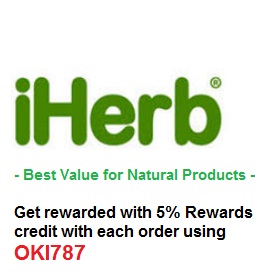Product Description
Provides broad-spectrum UV protection with an optimum blend of five filters. The moisturizing formula hydrates the skin for 8 hours and absorbs quickly. Micronized Titanium Dioxide leaves no filmy white residue. Non-greasy, lightweight, fragrance-free, non-irritating and non-comedogenic, this moisturizing product is ideal for daily facial use.
This was in the freebie pack that I redeemed from Cetaphil. At 5ml, I used it as body suncreen because I am picky on what I use on the face, where texture is concerned.
With a hint of the sunscreen scent, the milky white content is creamy and slightly greasy. It has a bit of shine after application.
At SPF50 with protection against UVA and UVB rays, it seemed good enough as a sunscreen for daily wear so lets take a quick look at its ingredients.
Since I do not have the ingredients stated on my sample size, I checked it up online and found 2 different versions.
Ingredients ( from CGH ):
Aqua C12-15, Alkyl Benzoate, Glycerin, Ethlhexyl Salicylate, Titanium Dioxide, Butyl Methoxydibenzoylmethane, Propylene Glycol, Bis¬-Ethylhexloxyphenol, Methoxyphenyl Triazine, Octocrylene, Cyclopentasiloxane, Stearic acid, Potassium Cetyl Phosphate, Dimethicone, Myristyl Myristate, Nylon-12, Petrolatum, Ethylhexyl Triazone, polymethyl Methacrylate, aluminum hydroxide, Ammonium Polyacryloyldimethyl Taurate, Butylparaben, Disodium EDTA, Drometrizole Trisiloxane, Ethylparaben, Glyceryl Stearate, Hydrogenated Soybean Oil, Hydroxypropyl Methylcellulose, Isobutylparaben, Methylparaben, PEG-100 Stearate, Phenoxyethanol, Propyparaben, Stearyl Alcohol, Terephthalylidene Dicampor Sulfonic Acid, Sodium Chloride, Tocopherol, Triethanolamine
Ingredients ( from Rosacea group ) :
Active Ingredients: Octinoxate 7.5%, Octisalate 5%, Octocrylene 7%, Oxybenzone 6%, Titanium Dioxide 5.7%
Inactive Ingredients: Water, Propylene Glycol, Glycerin, Dimethicone, VP/Eicosene Copolymer, Cyclohexasiloxane, Stearic Acid, Potassium Cetyl Phosphate, Glyceryl Stearate, PEG-100 Stearate, Aluminum Hydroxide, Dimethiconol, Disodium EDTA, Tocopherol, Cyclopen-tasiloxane, Triethanolamine, Phenoxyethanol, Ethylparaben, Chlorphenesin, Cetyl Alcohol, Acrylates/C10-30 Alkyl Acrylate Crosspolymer, Methylparaben, Xanthan Gum
Presuming the first ingredient list derived from CGH, it contains the following sunscreen ingredients
Titanium Dioxide : Partial UVA protection and full UVB protection
Butyl Methoxydibenzoylmethane : Full UVA protection and partial UVB protection
Octocrylene : Partial UVA protection and full UVB protection
Terephthalylidene Dicamphor Sulfonic Acid : Full UVA protection and partial UVB protection
Ethylhexyl Triazone : UV filter which absorbs UV light
Drometrizole Trisiloxane : UV filter which absorbs UV light
Presuming the second ingredient list derived from Rosacea Group, this product appears to have a poor protection against UVA rays.
Octinoxate 7.5%Octinoxate is the most widely used UVB blocking agent in the skin care industry. However, when Octinoxate is exposed to sunlight, "it is converted into a less UV absorbent form hence it is not very stable. This conversion can be partly prevented by certain other UV blockers, particularly bemotrizinol (Tinosorb M).
Note that if Octinoxate combined with Avobenzone, it degrades even faster.
According to the EWG, Octinoxate is a moderate hazard, primarily because it can lead to developmental and reproductive toxicity through enhanced skin absorption. It can produce estrogen-like effects and should not be used by pregnant women and children
Octisalate 5%Octisalate is an organic compound used as an ingredient in sunscreens and cosmetics to absorb the full range of UVB rays from the sun. Although the Cosmetics Ingredient Review notes that reproductive and developmental toxicity can occur in relation to Salicylic Acid, one of the two primary components of Octisalate, it has determined that the levels used in cosmetic and beauty products would not cause any adverse reaction. Importantly, the FDA has approved Octisalate for use in sunscreen with up to 5%
Octisalate's safety record seems to be fairly good although it has been linked to contact dermititus.
Octocrylene 7%
According to TIA, Octocrylene can penetrate into the skin and act as a photosensitizer, resulting in an increased production of free radicals. Free radicals can induce indirect DNA damage and potentially contribute to the increased incidence of malignant melanoma in sunscreen-users. Maximum recommended by FDA is 3%. You can also read more about it in EWG.
According to this source, Octocrylene appears to be a strong allergen leading to contact dermatitis in children and mostly photoallergic contact dermatitis in adults with an often-associated history of photoallergy from ketoprofen. Patients with photoallergy from ketoprofen frequently have positive photopatch test reactions to octocrylene. These patients need to be informed of sunscreen products not containing octocrylene, benzophenone-3, or fragrances
Oxybenzone 6% Oxybenzone primarily functions as a photostabilizer and sunscreen. It also helps preserve the integrity of other cosmetic ingredients, preventing their deterioration under the sun. For this reason, Oxybenzone is most often used in conjunction with other sunscreen agents.
According to the Environmental Working Group, it has been shown that the product penetrate the skin and cause photo-sensitivity. As a photocarcinogen, it has demonstrated an increase in the production of harmful free radicals and an ability to attack DNA cells.
The FDA has approved the use of Oxybenzone as a safe and effective OTC sunscreen ingredient, but only in concentrations up to 6%
Titanium Dioxide 5.7%
According to EWG, this ingredient has a low hazard of level 1 to 3 even though there is a moderate health concern of organ system toxicity. Since it only provides partial UVA protection, it is best to be formulated with other active ingredients such as Zinc Oxide for a better protection.














No comments
Post a Comment